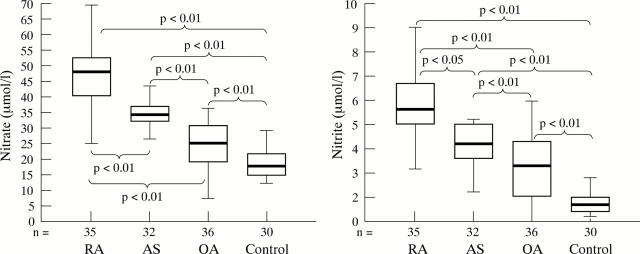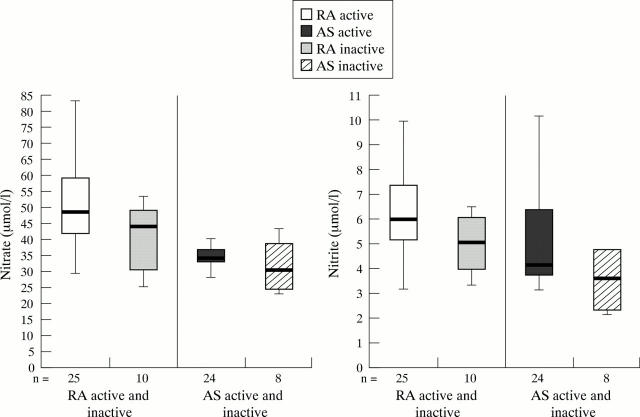Abstract
Methods: Thirty five patients with RA, 32 patients with AS, and 36 patients with OA were entered into this study. In addition, 30 healthy volunteers acted as a control group. Concentrations of nitrate and nitrite in serum were determined by direct and indirect Griess reactions. C reactive protein and erythrocyte sedimentation rate levels were determined as markers of systemic activity of disease (SAD) in RA and AS groups.
Results: Serum nitrate and nitrite levels were found to be higher in patients with AS and RA than in the OA group (p<0.01). In addition, serum nitrate and nitrite levels were higher in all three groups than in the control group (p<0.01). Moreover, serum nitrate and nitrite levels were higher in patients who had SAD than in those who had not in the RA and AS groups (p<0.01 and p<0.05, respectively), and there was a correlation between serum nitrate and nitrite concentrations and SAD variables in patients with RA (Spearman's rs=0.414, p<0.05 and rs=0.408, p<0.05, respectively) and AS (rs=0.421, p<0.05 and rs=0.412, p<0.05, respectively).
Conclusion: The findings suggest that nitrate and nitrite production is enhanced in patients with inflammatory arthritis compared with OA. In addition, serum nitrate and nitrite levels are enhanced in patients with RA, AS, and OA compared with healthy subjects. Furthermore, there is a correlation between the SAD variables and serum nitrate and nitrite levels in patients with RA and AS.
Full Text
The Full Text of this article is available as a PDF (92.2 KB).
Figure 1 .
Nitrate and nitrite levels in each group.
Figure 2 .
Comparison of nitrate and nitrite levels in patients with active and inactive RA and AS.




